Jessica Knauss's Blog, page 48
June 20, 2012
The Search for Artemis by P. D. Griffith
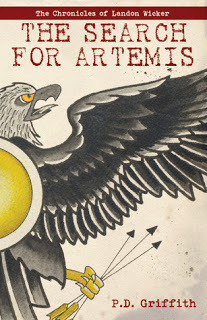 Imagine a world in which kids who can move objects telekinetically get into an epic snowball fight! In this book, it's our own world. Certain children have been found to possess a gene enabling them both to control objects with their minds and to hear others' outward-projected thoughts. Landon Wicker has no idea that these kids exist, much less that he is one of them, until a terrible incident that kills both of his parents and sends him on the run from the law. Eventually, he's found by a recruiter for a special school that develops the abilities of just these types of kids.
Imagine a world in which kids who can move objects telekinetically get into an epic snowball fight! In this book, it's our own world. Certain children have been found to possess a gene enabling them both to control objects with their minds and to hear others' outward-projected thoughts. Landon Wicker has no idea that these kids exist, much less that he is one of them, until a terrible incident that kills both of his parents and sends him on the run from the law. Eventually, he's found by a recruiter for a special school that develops the abilities of just these types of kids.The story is very imaginative and kept me reading. Every time I thought I knew where the story was going, some twist would surprise me. Some parts of the time Landon spends in school recall Harry Potter, complete with a Ron and a Hermione, but shortly after the already mentioned awesome and perfect for sports-inclined readers snowball fight, the plot takes a completely new turn that has nothing to do with Hogwarts.
This is not a fast read. The author has a gift for detail that s/he may employ just a bit too much at times, but since this book is partially a mystery, I wondered which details were important and which red herrings, which is a fun way to read. This is merely the first book in what appears to be a trilogy, with the plot thickening steadily toward the end.
Highly recommended for readers who love a detailed story and a mystery they can sink their teeth into.
Published on June 20, 2012 00:25
June 18, 2012
The Divorce of Henry VIII (Review)
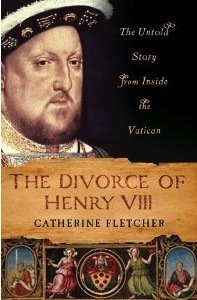 I've always found the termination of Henry VIII's first marriage to be much more fascinating than all the beheadings to follow. The marriage was to Catherine of Aragon, the daughter of the Queen Isabel who sent Columbus on his voyage in 1492, all figures dear to my own heart. Catherine never acquiesced to the divorce. To make matters even more exciting, in order to complete the divorce, Henry would have to establish an entire new church and proclaim himself its head. This divorce changed the Western world forever.
I've always found the termination of Henry VIII's first marriage to be much more fascinating than all the beheadings to follow. The marriage was to Catherine of Aragon, the daughter of the Queen Isabel who sent Columbus on his voyage in 1492, all figures dear to my own heart. Catherine never acquiesced to the divorce. To make matters even more exciting, in order to complete the divorce, Henry would have to establish an entire new church and proclaim himself its head. This divorce changed the Western world forever.Catherine Fletcher's The Divorce of Henry VIII: The Untold History from Inside the Vatican finally focuses on the behind-the-scenes characters who did all the political schmoozing, financing, backstabbing, and running for their lives that made the final outcome possible. Fletcher is our eye on English concerns at the Vatican, which at the time was run in a manner indistinguishable from the other power states that surround it. The insults and bribery may or may not surprise readers, but they make for a great story.
Like most books of original historical research, this is dense with names, places and dates, but if the reader looks carefully, she will find all her favorite Tudor characters and many colorful Italian ones besides. It is written in a readable style with the kinds of conjectures about character motivation and the feel of place that will keep steadfast fiction readers involved to the very end.
Published on June 18, 2012 00:15
June 13, 2012
Interview with Baer Charlton, Author of The Very Littlest Dragon
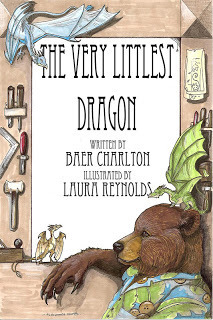 On Monday, I reviewed the unique book The Very Littlest Dragon. Today, not coincidentally, its author, Baer Charlton, is here to chat.
On Monday, I reviewed the unique book The Very Littlest Dragon. Today, not coincidentally, its author, Baer Charlton, is here to chat.JK: Where did you grow up?
BC: I was born and raised in the mountains/forests of California. My father was a forest ranger.
JK: That makes us practically twins. My father worked for the paper mill instead of in the forest. What you have done besides writing?
BC: Although in the early years, helping my mother with setting type and printing, one would have thought I would become a printer, the woodworking won out and I became at a very early age, a picture framer. I have done it off and one for over forty years and have become an internationally recognized award winning framer, teacher, consultant and photo journalist for the international picture framing industry.
Over the years, the demands of the job, economy or just boredom, drove me to try many other jobs, and to travel. Having a camera in my hands by age 8, started an interest that would be best described as “ancillary” to my journalistic writing.
Having a strong background of dealing with people, combined with my degree in Social Anthropology, it is no wonder that I would turn to telling stories. For decades, I have helped people tell their stories through picture framing, as well as telling stories about how to do things, places of interest, history or even straight out telling fiction that resonates with people in their own lives.
Having done many different jobs that ran a gambit from picture framing people’s lives, to driving trucks, tending bar in blue collar towns in Colorado and Louisiana to hard helmet welding, 80-120’ deep, 200 miles off-shore from New Orleans; you get to meet a lot of different people. When that work is performed in the “less than pretty” side of life, the people become a lot more “interesting” and diverse. I guess that is really why I wrote The Very Littlest Dragon: it is the book for all of us that will never appear in People magazine, or be interviewed on Good Morning America. But the truth is, we are all different, and it is that difference that makes us all the same.
JK: The book looks like it’s for children or young adults, but you say it isn’t. How would describe your target audience?
BC: I think Laura Reynolds, the Illustrator said it best; it’s for ages 8 to death. I’ve have gotten great feedback from kids, youth parents and even a few great grandparents. Everyone likes the book, but they all are reading a different story.
The little kids, really get it about the dragon who is different, and is even getting picked on or bullied. But they really light-up about the adventures, the 28 illustrations in the book, and many more images on the web site are also a fun source for them. And parents should know, that Laura and I started this project with three rules: First, no scary animals. (We have Congress for that.) Second, no magic -- things need to be worked out. Kids need to know that if you get yourself in a bind, you can’t just whip out a stick and say “disperso” and solve the problem; life doesn’t work that way. Third and most important, is that the book has to be fun for anyone to read -- even a parent who is reading it for the fifth time.
The young adults like the story because they have been around the block a few times already, and have had a few years of feeling different and maybe even picked on because of that difference. They are reading the story, looking for a “pay-off”. They want to know that there is at least hope that there might be a light at the end of that tunnel of feeling different, being bullied and just growing up. (I can’t guarantee it, but things to look a bit better.)
Adults of all ages enjoy the many levels of the story, and the interesting different characters that came to the party. They also read it from the long view of having suffered all of the angst, and now they can look back on it and enjoy the journey.
JK: How does your real life affect your fiction?
BC: I have met and worked alongside many interesting and different people. Some of the places I have traveled to or through lent themselves to the descriptions of locations. You can look at a photo or even hundreds of photos of high mountains, but until you have climbed above the true tree-line and breathed in air so cold that hurt from your nose to the bottom of your lungs, brushed away ice at the corner of your eyes where your tears froze from your blinking, you can’t describe it.
It is easy making up a blue or red dragon, because whatever you say about them is what they are. But when you go to make them work/fly, that was Laura’s wheel-house. She is the animal expert. And yes, even how a dragon must be, to fly, walk or even breathe. So I had to clear some of the characters through her; like Boomer, Tink’s brother. I needed him to fly extremely fast because I didn’t want him just magically popping around the world. So for him to fly at Mach 3, I had to figure out a few physical things to clear it past the flight master. Luckily, I’m a creative guy, and we have Boomer as a High Speed Messenger.
But when you start to give your characters, dragon, dog or even human, their personalities, it helps to draw from real people. Yes, I know there is that disclaimer “I made them up,” but we don’t just pull personalities out of thin air, we draw them or parts of them, from people that we have met or known.
The more diverse your life experience, the more diverse your locations and characters become.
JK: What has been the book that most influenced your writing? What other things influence your work?
BC: In the third or fourth grade, I read The Hunchback of Notre Dame. At the time, I was the largest kid in the class, and the shyest. My stuttering was becoming a problem and so the combination made me identify strongly with Quasimodo. I also ran through the rest of the books on my parents’ bookshelf, Dr Jeckyll and Mr Hyde, and Mary Shelly’s Frankenstein. These were all the foundations for my understanding the nature of the person inside the monster or just someone we don’t know.
As I got older, the summer I was reading The Hobbit and grinding my way through the adventure of the Rings, the movie Lawrence of Arabia came out. For adventure, I think I draw a fine path weaving through those two stories.
In my next book, “Death On A Dime,” a murder mystery set in San Jose, CA, I still draw character treatments from those stories and people I have known.
JK: What is your inspiration, and what specifically was your inspiration for The Very Littlest Dragon?
BC: When I was growing up as the stuttering fat kid in the class, there was a great book called The Ugly Duckling. It gave me, and millions of other kids hope that one day, we too, would become our swan. By the time we grow up, and understand that we won’t become a swan, nor were we an ugly duckling, it doesn’t matter. But we had that hope, that story to hold on to.
Today, that story and hope is taken away. The politically correct police would only approve it to be in schools and libraries if it was “The Aesthetically Challenged Adolescent Water Fowl.” Seriously.
I could tell you about the little girl two doors away, who will never stand taller than her sitting in her electric wheel chair, but there are thousands of other Shine Children like her. I could tell you what it feels like to be the only white boy to ever stand in a black church in Mississippi, and sing loud next to a woman and her family that I will never forget, but then there are people who do that every day, and live their whole lives as the only person “of color” where they are, work, shop or live. I can tell you about meeting people in such different cultures and countries, but then I would have to also tell you that the only time I was truly struck by culture shock, was upon returning home to Los Angeles.
My inspiration is my life, and the amazing people I have experienced, and that unless I introduce those characters to people, then those people may never open their eyes and see the diversity in front of them, and the amazing world that opens up to them.
JK: How much time a day do you devote to fiction writing?
BC: It doesn’t matter whether it is fiction or non-fiction, stories or articles, my average day is about 4-6 hours of writing a day. That can look like a lot of emails, and a 500 word side bar that then needs polish, or could be as high as 20,000 words that spewed from my gut and fingers… it’s all writing.
JK: What is your work area like? Do you have any methods that might seem unusual or inspiring to other writers?
BC: Some or most of the better writing, such as the bulk of The Very Littlest Dragon, and almost all of Death on a Dime were written between the hours of midnight and seven am. To some, and sometimes me, insomnia can be a harsh disorder. When it’s at its best, it gets together with its harsh sister, Muse, and they work me over until I quietly get up, walk down two flights of stairs into my dungeon of an office, wake up the computer and let the gut and fingers do what they obviously want to do. I have even woken up in the basement, with my fingers typing, and I’m staring at stuff that I can’t make heads or tails of… Until I get some coffee and start the writing forensics. Like, what story was I working on? And that could be anywhere from a few to a dozen. Right now I have three books I pick at, as well as four to eight articles.
One thing that I do find that works for me, is that I print out large sections of my manuscripts, double spaced, single-sided; throw them into a three-ring binder and head for a restaurant. (Luckily or unluckily, I have to travel a lot with my day job as a territory manufacturer’s representative.) As I eat, I edit and re-write my manuscripts. Sometimes this can turn into a very fortunate event.
About a year ago, I was working on Death on a Dime in a small coffee shop that is very local color. A man asked if I had a screen play. “No,” I said, “it’s a murder mystery that takes place in San Jose.” He sits up real big and says, “I’m from San Jose”. Turned out, he was the owner of a small deli that has been around for 100 years that I want to use for their great Sicilian sausage. “Of course you can use us. And when you bring out the book, we host your first signing at Chiaramonte’s.”
It really doesn’t get much better than that. And I look forward to that sausage and angel hair pasta.
JK: I never heard a better reason to write in public. When and why did you get started writing?
BC: When I was young, there were many long nights helping my mother print. We had a small press, and a larger one. So while she printed not cards on the larger, I did thousands of business cards on the smaller. As we went through the mindless routine, we talked. The talk usually got around to one of the stories we were “working on”. These stories were outlined on yellow 3x5 cards wrapped in two printers rubber-bands; a red and a blue. That was as far as my mother was comfortable putting actual words to paper.
My mother was a perfect speller (something I didn’t inherit). She also could type well over 100 word per minute (something else I didn’t inherit).
So there we were, two very similar peas in a back room, working over two presses, and talking about writing stories.
Many years later, after she had passed away, my father handed me a packet of 3x5 cards, bound in a red and a blue printers rubbers. He said that he thought my mother had wanted me to have them. He was right, and I took the little bundle, and carefully pitched it to the back of my desk drawer.
A few years later, when I had gotten my first computer, and a single floppy program called Word, I sat cleaning out my desk. There in the back of the drawer was that bundle. Slowly, I stripped the bandage off the wound of my heart that 30 years later, still misses her.
As I split the bundle in half, to the two cards that were facing each other, like hundreds of times before, a small piece of yellow paper fell from between the halves. If Sticky notes had been around, she might have used one. But, there, lying on the floor, was a tiny piece of yellow paper … with one word written on it.
It was my entire true inheritance from her. It was her reaching back, and guiding me forward. It was also the one thing that had scared her, her whole life. I reached down and picked it up. There in her thin beautiful cursive script was the single most powerful word between the two of us.
“Publish.”
Two weeks later, I had sold my first article to Rider Magazine.
JK: What kind of feedback do you get? Do you have a definable fan base?
BC: The feedback I have gotten has been all over the board, but mostly that they enjoyed the book. Which was one of the goals we had set out at the start: a fun read. I understand what you are asking here, but it’s not so easy. The Very Littlest Dragon is getting read by 8 year olds, and 80 year olds, and they don’t read the same story as the other, so only time and a lot more feedback will tell.
JK: Are your family and friends supportive?
BC: My first line of editing is my wife. So, yes, she is very supportive of my writing. But there is a line as to how much reading she is willing to do, and also what she is willing to read about. So, dragons and articles about picture framing and travel she’s good with. But with Death on a Dime, that got shipped out to my main editor Mar Griswold. She’s also a picture framer, so a little bit of blood doesn’t bother her at all.
I suppose I might have a good friend or two that doesn’t read my work, but for the most part, they are all up for looking at the raw works, I guess I may have something to do with my being open to changes, suggestions and any other cockamamie things they want to tell me. And if they rub me too much the wrong way, they know I might eventually stick them in a novel just to kill them off.
Then there is the good friends that are great characters. I think it’s called “writer’s choice.”
JK: Thank you so much for sharing your book and experience with us today.
For more on the world of The Very Littlest Dragon, visit its website. It is available for purchase from Tiny Lightbulbs and Amazon as well as select custom picture framers and bookstores.
Published on June 13, 2012 00:13
June 11, 2012
The Very Littlest Dragon
 The Very Littlest Dragon tells the story of a multitude of dragons, especially the one who thinks he's the smallest, Tink. Tink's size and apparent lack of special skills in the frame shop where he works with many talented dragons and a talking bear make him feel less than special. But that is before he attends the dragon wedding of the century. From there, the reader is catapulted into a labyrinth of dragon history and folklore that result in Tink becoming the most special dragon of all.
The Very Littlest Dragon tells the story of a multitude of dragons, especially the one who thinks he's the smallest, Tink. Tink's size and apparent lack of special skills in the frame shop where he works with many talented dragons and a talking bear make him feel less than special. But that is before he attends the dragon wedding of the century. From there, the reader is catapulted into a labyrinth of dragon history and folklore that result in Tink becoming the most special dragon of all. The enchanting pictures by Laura Reynolds make the book worth just about any cover price. The writing is rich in detail, making the fantastic world of dragons perfectly plausible at the level of physics and answering all the questions you ever had about picture framing techniques. I enjoyed the interplay of dragon culture with the few humans we meet and the vast distances the dragons can travel because some of them (including Tink's brother, who acts as a willing chauffer) are capable of supersonic flight. The story is told obliquely through conversations over coffee, fish balls, and biscuits when not in frenzied action, and so the plot is not heavy-handed like it can be in some children's lit.
The editor in me won't let me end the review without noting that there are numerous textual errors in the paperback edition, ranging from misplaced commas to type-o's and misused words. Anyone who is not an editor will be able to pass these right by, as they never impede the intended meaning.
Overall, this book is for anyone from the ages of eight to one million who's looking for an imaginative, whimsical ride around the world and a sweet, positive message.
Tune in on Wednesday for a fun interview with author Baer Charlton.
Published on June 11, 2012 00:52
June 7, 2012
Review of Selkie Dreams by Kristin Gleeson
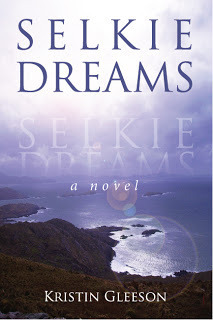 In the late 1800's, Maire believes she is the child of her Irish father and a selkie who had to abandon her for her own seal folk in the sea. The stars align and allow Maire to follow her heart to the wilds of Alaska, ostensibly to teach English language and Christian values to the native Tlingit tribes there. The grand scale of the landscape astonishes her, but she feels more at home there than anywhere else. This is partly a story of the spirit's liberation, but elements of the plot are based on the selkie myths, so in hindsight, I might want to go back and warn Maire about the consequences of returning to where she belongs. The ending in particular is surprising and mystical.
In the late 1800's, Maire believes she is the child of her Irish father and a selkie who had to abandon her for her own seal folk in the sea. The stars align and allow Maire to follow her heart to the wilds of Alaska, ostensibly to teach English language and Christian values to the native Tlingit tribes there. The grand scale of the landscape astonishes her, but she feels more at home there than anywhere else. This is partly a story of the spirit's liberation, but elements of the plot are based on the selkie myths, so in hindsight, I might want to go back and warn Maire about the consequences of returning to where she belongs. The ending in particular is surprising and mystical.Selkie Dreams combines the charm of Irish folktales with the grandeur and pride of Tlingit myth, which is no small feat. The author writes with both sensitivity and authority about two places with which she is intimately familiar. I enjoyed the wide array of characters who were complex mixtures of their upbringing and their innermost desires. I would have liked to know a bit more about William, but since he is a mystery to Maire, it's appropriate that he's mainly a mystery to the reader.
The novel overall is realistic and historically accurate, with interesting parallels between the social place of the Irish in Britain and the circumscribed role of the Tlingit and other Native Americans in Western Civilization. But through it all runs an undercurrent of lore. I highly recommend this book for readers who appreciate history with a twist.
Published on June 07, 2012 00:33
June 5, 2012
The Selkie Myth: Guest Post by Kristin Gleeson
 The Selkie. The name conjures up romantic images, even if you’re not quite sure what they are--seals that come ashore and take on human form at midsummer’s eve. You can almost believe it when you look at their baleful eyes with their long lashes that look so human. And their mournful cries that convey such sadness. Is it a myth? Some people, especially in times past would have said, ‘not so.’
The Selkie. The name conjures up romantic images, even if you’re not quite sure what they are--seals that come ashore and take on human form at midsummer’s eve. You can almost believe it when you look at their baleful eyes with their long lashes that look so human. And their mournful cries that convey such sadness. Is it a myth? Some people, especially in times past would have said, ‘not so.’ The myths of the selkie are usually found among people who inhabit the coastal waters of Scotland, Ireland and even far flung areas where the Saami (Laplanders) and the Inuit live. One of the theories used to explain their existence is that selkies are the souls of dead fishermen and other people lost at sea. Another theory is that they are fallen angels, doomed to live out their days as animals until judgement comes; or that they are humans forced to take animal form for some grave misconduct.
The various myths that feature selkies show them as either men or women who come ashore either Midsummer’s Eve, “every ninth night,” or “every seventh stream.” I use both types of selkies in my novel, Selkie Dreams. A myth of a woman selkie tells of a fisherman who spies a selkie woman on the shore and compels her to go with him after he steals and hides her seal skin. She bears him a child, but eventually she finds her seal skin and she returns to the sea, leaving her child behind with the promise she will come when the child calls.
 “Yer mam left but she had no choice, so,” Cook would tell me as she watched Polly, the kitchen maid, chop the vegetables, or Annie the house maid collect the tea tray. “She went back to the sea, back to her seal folk. They live ashore for a brief spell, following human ways, until after a while the pull from the sea comes over them, strong and forceful like. It’s their true folk, the selkies, who call them home, so it is.” Excerpt from Selkie Dreams.
“Yer mam left but she had no choice, so,” Cook would tell me as she watched Polly, the kitchen maid, chop the vegetables, or Annie the house maid collect the tea tray. “She went back to the sea, back to her seal folk. They live ashore for a brief spell, following human ways, until after a while the pull from the sea comes over them, strong and forceful like. It’s their true folk, the selkies, who call them home, so it is.” Excerpt from Selkie Dreams. A male selkie myth is also a running theme in my novel and comes from the song The Silkie of Sule Skerrie, the song that frames the novel. It tells the story of a selkie man who comes ashore and seeks out a lonely woman. After spending only one night together the man departs and the woman spends her days searching the shoreline awaiting his return. Eventually, after she gives birth to a son, the man appears and gives her a gold chain for the son. Years later, when the son is seven years old, the selkie comes again to claim him. Though she mourns her son and lover, she marries a hunter who, not long after their marriage, shoots two seals, one with a gold chain around its neck.
With all the many versions of the myth, each contains the unmistakeable theme of transformation and the idea of humanity’s unbreakable link with the sea. That idea underpins the novel as well as the song.
It wasn’t just the song and the myth that influenced the novel. Though it starts out in Ireland, in the north, the main character, Máire travels to Alaska, another place that seals inhabit, to teach the Tlingit. I was inspired to select that area and the Tlingit to set the novel from my work with the Tlingit when I was an administrator at an historical society. A Tlingit elder phoned me and asked for help trying to prove that Tlingits inhabited a section of land in Alaska when the U.S. go
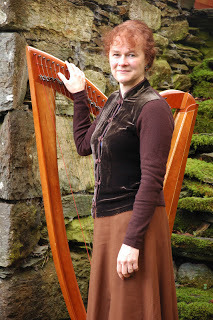 Author Kristin GleesonWhile I worked to assist the Tlingit elder and his clan I learned much about the Tlingit view of the effects of settlement and missionary efforts and realized how much that view was lacking from books and official records. I was fascinated. Some of it was heartbreaking. Children were often ripped from their families and sent off to boarding schools. When the children returned to their families sometimes they couldn’t even communicate with their families because they forgot the language. It was clear that the missionaries, though often well intentioned, were driven by the idea that they were the superior culture and race and treated the native people for the most part as barbarians in need of civilizing. I’m not saying the Tlingits were peace loving angels, but their culture at that time period I felt need to be seen in context. What better way than through a novel? And like my main character, Máire, the Tlingit have myths that influenced their lives and how they saw the world, it seemed a good match. Then add American mission views and racial myths and there is much to make for an exciting story.
Author Kristin GleesonWhile I worked to assist the Tlingit elder and his clan I learned much about the Tlingit view of the effects of settlement and missionary efforts and realized how much that view was lacking from books and official records. I was fascinated. Some of it was heartbreaking. Children were often ripped from their families and sent off to boarding schools. When the children returned to their families sometimes they couldn’t even communicate with their families because they forgot the language. It was clear that the missionaries, though often well intentioned, were driven by the idea that they were the superior culture and race and treated the native people for the most part as barbarians in need of civilizing. I’m not saying the Tlingits were peace loving angels, but their culture at that time period I felt need to be seen in context. What better way than through a novel? And like my main character, Máire, the Tlingit have myths that influenced their lives and how they saw the world, it seemed a good match. Then add American mission views and racial myths and there is much to make for an exciting story. Kristin Gleeson www.kristingleeson.comFacebook www.facebook.com/kristingleeson1
Selkie Dreams will be published June 7, 2012, by Knox Robinson Publishing www.knoxrobinsonpublishing.com $23.99 hardback and $5.99 ebook and will also be available from Amazon, Book Depository, the publisher’s website and wherever fine books are sold.
Purchase links: Amazon hardcover Amazon.co.uk hardcoverBook Depository
Check this blog on Thursday for a review of Selkie Dreams!
Published on June 05, 2012 01:01
May 30, 2012
Interview with Gordon C. Krantz
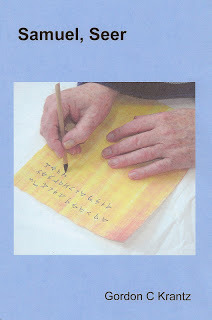 Krantz's historical fiction "autobiography"
Krantz's historical fiction "autobiography"of Samuel, the biblical seer.
Today we welcome experienced and prolific author Gordon C. Krantz.
JK: How long have you been writing? What have you done besides writing?
GCK: I grew up on a 40-acre farm in central Minnesota during the Depression. It was a solidly Swedish immigrant community where no one over five spoke English. We didn’t know we were poor because everyone else was, too. Then we (a family of seven) moved to 160 acres in west central Wisconsin, just across the Mississippi from Red Wing, Minnesota, where I had been born and where I went to high school.
I entered college, the first in our family to do that, and after a semester I entered the Army (7/6/43 – 1/6/46) to serve in Europe. That was the subject of my most popular book, Ordinary GI. Then, after the rest of college (MA), I became a vocational rehabilitation counselor and later district supervisor. I was the first psychologist to work in the first sheltered workshop for the mentally retarded in US. I was imported into secondary special education (with two others) in Minneapolis to bring rehab technology into public education. More of that, merging with vocational education, and some private psych consulting, also participation in the systematization of special ed and vocational ed. I made significant contributions to development of the technologies of vocational evaluation and work adjustment. I went back to UM for my PhD in education administration. I then worked for the state in community service development, retired, and activated to structure a software program to enable elderly to live at home longer (not a successful business). Retired, I now write and volunteer. My book, “What Did You do for a Living, Daddy?” is mostly of interest to family. My professional papers are on file at the Minnesota History Center.
JK: And finally, you've been writing books. How did you get started with fiction?
GCK: Most of my previous writing was professional/technical. The first novel was Judges, Rulers and One Angry Levite, the fictional memoirs of the characters in the Book of Judges. Then Samuel, Seer. Both extensively footnoted to set the historical/cultural context. Next a simple history book about Palestine 1250-1000 BC, The Times of the Judges. My latest, What Happened Between the Testaments, a history of Judea and its surroundings 430 BC – 1 AD, is history interspersed with fictional vignettes to give the feel of how people were affected. It has the best of my texts and the worst of my covers – I'm working on that. The audience for these four is Jewish and Christian people who may like to know how we got from the Persian Old Testament to the Greco-Roman New Testament. Most in the target audience who have read these books have read them for their entertainment value.
I have another four books: Ordinary GI, my most popular, my memoir that interests WW II buffs, the widows and grandchildren of my company comrades. Someone in Australia offered it second-hand on the Web for $35! “What Did You Do for a Living, Daddy?” already mentioned. Greece Freewheeling and Dig that Street are more or less travelogues and readers seem to like them so well that copies stay in circulation. The first recounts my twenty days in Greece and the second is the volunteer excavation below the wall of the Temple Mount in Jerusalem plus the usual tours, including climbing Mt. Sinai at night.
I have not aggressively marketed any of my books, and should get to that. I'm now going for the e-book market – my printer has put up a couple of them, and I’m dipping a toe into Kindle.
JK: Which authors influence your work? What is your favorite book?
GCK: Many, including Mark Twain, of course. One? Maybe Mary Renault’s The King Must Die. She helps me resonate with Greece of 3500 years ago.
JK: How does real life affect your fiction?
GCK: I have delved lifelong into history, anthropology, archaeology and, of course, literature. So when I write historical fiction, I’m confident that I have the facts and the feel down pretty well. I’ve also paid attention to dialect and translation, so that informs dialogue. I let Samuel be pedantic, partly because he was (if, as I think, he wrote the first part of I Samuel) and partly because I am. The High Priest Eli fictionally remarks on Sam’s pedanticism. Other characters are more colloquial. In my historical fiction, I can’t have everyone using the same voice. When I find myself overusing a word, I try to catch it and change it.
JK: What inspired you to delve into the lives of biblical characters?
GCK: I was lying awake one night, thinking that the Judge Shamgar had only two lines of text: “After [the previous] judge ruled Shamgar, who slew 600 Philistines with an ox goad. He also judged Israel.” Not fair for such a doughty man, so I got up and wrote his memoir. Then the other judges clamored. That led to Samuel. The history was a fill-in. The Between the Testaments book bubbled for a couple of years before it forced itself upon me. There, the actual incidents called forth the vignettes – how could Alexander not write a testy note to the High Priest who refused to renounce his allegiance to Persia?
JK: It sounds as if your characters are in the driver's seat! Do you have a specific method for letting them "speak"?
GCK: How much time a day I devote to writing is highly variable. On a roll, I keep at it. I’m offline more than on – I’m retired, with sparse schedule. My work area is cluttered, though I do clean it out occasionally (like yesterday). I live alone and have a den with computer, files, stacks of paper, bookshelves. And I don’t really have any method to recommend, other than that, for me, I need to know the time and place and culture that I write about, and I think I do.
JK: Have you always been a writer?
GCK: I began writing early, with poetry in elementary years. Then I edited my high school newspaper, ditto college. My writing style owes more to journalism than to composition. Lots of technical and professional writing – bad habit of thirteen-page letters, a few of which were widely circulated. I think I’ve pruned my wordiness. Even so, professionally I sometimes wrote so compactly that it was hard to read.
JK: What kind of feedback do you get for your books?
GCK: All pretty positive. Mixed reviews on my use of footnotes – some think it’s distracting, others claim that it allows them to understand why people would say and do what I present. My sales are word-of-mouth, though I haven’t kept count. The audience tends to be older, probably because younger people don’t have time to read books that aren’t required. Family and friends are very supportive (hey! I used that overworked word "very"!), but you have to discount some of that. But strangers also seem to enjoy the books.
JK: Thank you very much for sharing your writing with us.
GCK: Thank you for the opportunity to set down these thoughts. One never knows what one thinks until the words come out.
Gordon's diverse and amazing books are available on Amazon.
Published on May 30, 2012 00:13
May 28, 2012
Interview with Dave Evardson
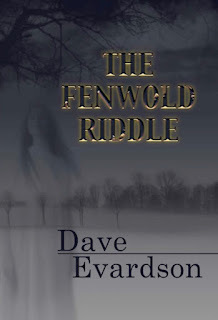 For many years Dave and Julie Evardson have earned a following around the country for their special brand of mainly maritime folk song. Dave’s songs touch on several subjects and in particular celebrate Grimsby’s (Lincolnshire, UK) fishing heritage. But as well as creating rhyming lyrics Dave has also been busy writing novels, at last finding success with Fireship Press of Tucson, Arizona.
For many years Dave and Julie Evardson have earned a following around the country for their special brand of mainly maritime folk song. Dave’s songs touch on several subjects and in particular celebrate Grimsby’s (Lincolnshire, UK) fishing heritage. But as well as creating rhyming lyrics Dave has also been busy writing novels, at last finding success with Fireship Press of Tucson, Arizona.Fireship specializes in historical and maritime books, but is issuing Dave’s work via its Cortero Publishing imprint, helping reinforce its foothold in the market for thrillers, nineteenth-century classics and fantasy.
The Fenwold Riddle is a dystopian science fiction adventure for young adults, which Dave hopes will also appeal to readers of all ages who enjoy a good story.
Explaining his plot, Dave says, “For centuries the land of Fenwold has been surrounded by a huge, impenetrable concrete wall. No one knows who made it, or why. The people mostly eke out a subsistence living from agriculture, but lately gangs of raiders have thwarted their efforts by stealing their harvests and burning their villages. At last Fenwold’s ruling Council sends out trained marshals to help the villagers fight off the raiders.
“One of these is young Marshal Dominic Bradley. He organises farmers in the south west of Fenwold to combat a local gang led by the vicious outlaw known simply as Red. But Bradley is also charged with another task - to find a way through the Wall and lead his people to whatever lies beyond. He has no idea how to achieve this, until he hears an old woman recite a strange and compelling riddle.
“During his quest he makes astounding discoveries about his country’s past – and his people’s destiny.”
Dave has already started writing a sequel to his book, and also has two other novels "looking for a publisher."
I was able to ask Dave three compelling questions:
JK: What inspired the plot and characters of The Fenwold Riddle?
DE: I enjoy fiction woven into social history. I also enjoy science fiction. My favourite author who managed expertly to combine the two was John Wyndham (Day Of The Triffids, The Midwich Cuckoos, etc). All right, so I’m old-fashioned. And I’m not the first to site a novel behind a wall. I wanted to explore how normal people might react to the inevitable social breakdown as the population expanded. Heroes would emerge, as would villains, but real change would only come about with the cooperation of ordinary people. Add to that the mystery of why Fenwold was enclosed in the first place, and you have the basis of a story that almost tells itself. In terms of characters I chose a hero with imperfections – inexperienced, priggish and misogynistic - plenty of room for improvement there - and a heroine with a physical imperfection who nevertheless succeeds in getting under his skin.
JK: How long have you been writing novels?
DE: Since September 1990 - mid-life crisis time? That was when I had my ‘Road to Damascus’ vision, while on holiday in Northern Italy. I was fairly happy with my work as an industrial accountant, and my social life singing and writing songs. But I wanted a new literary outlet. I had completed editing and publishing (on a shoestring) my Dad’s autobiography A Fitter’s Life which sold about 650 copies locally, and I’d acquired a taste for story telling. But as I suspect many novice writers do, I plunged right in without planning, research or much preparation at all. As a result I’ve only just finished that first comedic thriller. I wonder if twenty-two years is some kind of a record? Apart from The Fenwold Riddle, I’ve now almost concluded a second humorous adventure novel and I’m well into my Fenwold sequel.
JK: I understand you wrote The Fenwold Riddle as a member of a writers' group. Can you explain the benefits of that experience?
DE: Yarborough Writers was absolutely essential. Unless you’re a real "natural," only by exposing your work to honest criticism do you really have a chance of improving. Sometimes you’ll go away feeling hurt by having your composition ripped apart, but you think about what was said, develop the integrity to sift the good advice from mere differences in taste, amend your work accordingly and learn from the experience. Augment this with a few carefully chosen courses, and you should find your writing improves considerably.
JK: I'm leaving a similar great writers' group behind in Arizona and cannot recommend such groups enough. Thank you so much for stopping by, Dave.
The Fenwold Riddle is also available both as hard copy and as an e-book wherever fine books are sold.
See Dave and Julie’s website www.DaveEvardson.com for more about their songs and writing.
Published on May 28, 2012 00:58
May 25, 2012
Suffocate Giveaway and My Happy New Short Story
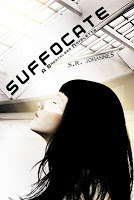 Thanks to everyone who participated in the Suffocate giveaway! The lucky winner is being contacted.
Thanks to everyone who participated in the Suffocate giveaway! The lucky winner is being contacted.My new release is a translation of a story I have loved for a long time. Please check it out. I hope you love it as much as I do.
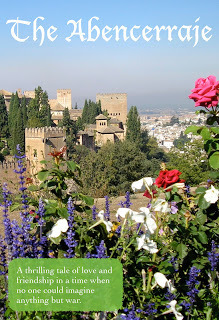 In this story, friendship and kindness overcome centuries of incivility. It's already received a five star review. Currently available for 99 cents wherever Kindle books are sold! Amazon Prime members can borrow it at no cost! Thank you so much for your support. Paperback and epub versions are coming soon.
In this story, friendship and kindness overcome centuries of incivility. It's already received a five star review. Currently available for 99 cents wherever Kindle books are sold! Amazon Prime members can borrow it at no cost! Thank you so much for your support. Paperback and epub versions are coming soon.
Published on May 25, 2012 08:01
May 23, 2012
What I'm Leaving in Arizona
I said, "Take this child, LordFrom Tucson, Arizona,Give her the wings to fly through harmonyAnd she won't bother you no more."-- Paul Simon, "Under African Skies"
When I was growing up listening to Graceland, I never thought those Tucson lyrics would apply to me. But now they do.
Although we've been trying to move on since we got here a year and a half ago, I have established some roots in Arizona that I'll be sorry to leave behind. And, I never would have guessed it, but living in the desert has the following advantages:
1. Smooth, silky hair all year round!
2. You don't even have to close up a box of crackers or cereal, and it will remain crunchy and fresh for months. My husband and I ate some freshly popped popcorn on our housing-seeking trip to Georgia, and it seemed stale to us after eating desert popcorn for a year and a half.
3. Amazing and endearing flora and fauna you won't find anywhere else in the world.
4. The unspeakable awesomeness of the dinosaurs outside the McDonald's at the corner of Kolb, Grant, and Tanque Verde. I've eaten at McDonald's only twice in the last twenty years, and both times were to enjoy the Dinosaur Learning Center.
The disadvantages are numerous, but I won't dwell on them.
The most important thing I'm leaving here is an astonishing tendency toward Kismet that has furthered my writing and publishing in ways no other place has, as well as vastly improving my offline social life. More specifically, I'm leaving behind that rarest of all beasts, a writing group that is supportive, useful, fun, and actually keeps meeting. Founded by Reneé Bibby (center in the picture) and co-managed by me (in the polka dots), the Low Writers have been going strong since before we drew up guidelines in March 2011.
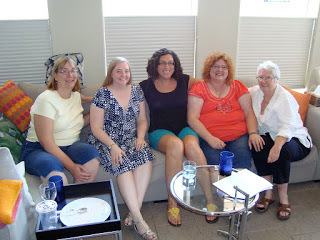 Remember these faces: we'll all be famous some day!
Remember these faces: we'll all be famous some day!
Each member brings a different talent to bear on their critiques, making for a highly creative variety of perspectives. Their acceptance and good humor have made writing into something much better than the lonely pounding at the keyboard. The members have been so kind as to request that I keep sending them chapters of my work in progress, The Seven Noble Knights of Lara, and at these heights, I don't see how I can turn them down. I will miss you gals! Thanks so much for everything!
When I was growing up listening to Graceland, I never thought those Tucson lyrics would apply to me. But now they do.
Although we've been trying to move on since we got here a year and a half ago, I have established some roots in Arizona that I'll be sorry to leave behind. And, I never would have guessed it, but living in the desert has the following advantages:
1. Smooth, silky hair all year round!
2. You don't even have to close up a box of crackers or cereal, and it will remain crunchy and fresh for months. My husband and I ate some freshly popped popcorn on our housing-seeking trip to Georgia, and it seemed stale to us after eating desert popcorn for a year and a half.
3. Amazing and endearing flora and fauna you won't find anywhere else in the world.
4. The unspeakable awesomeness of the dinosaurs outside the McDonald's at the corner of Kolb, Grant, and Tanque Verde. I've eaten at McDonald's only twice in the last twenty years, and both times were to enjoy the Dinosaur Learning Center.
The disadvantages are numerous, but I won't dwell on them.
The most important thing I'm leaving here is an astonishing tendency toward Kismet that has furthered my writing and publishing in ways no other place has, as well as vastly improving my offline social life. More specifically, I'm leaving behind that rarest of all beasts, a writing group that is supportive, useful, fun, and actually keeps meeting. Founded by Reneé Bibby (center in the picture) and co-managed by me (in the polka dots), the Low Writers have been going strong since before we drew up guidelines in March 2011.
 Remember these faces: we'll all be famous some day!
Remember these faces: we'll all be famous some day!Each member brings a different talent to bear on their critiques, making for a highly creative variety of perspectives. Their acceptance and good humor have made writing into something much better than the lonely pounding at the keyboard. The members have been so kind as to request that I keep sending them chapters of my work in progress, The Seven Noble Knights of Lara, and at these heights, I don't see how I can turn them down. I will miss you gals! Thanks so much for everything!
Published on May 23, 2012 00:40



